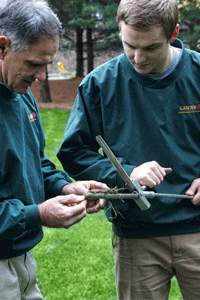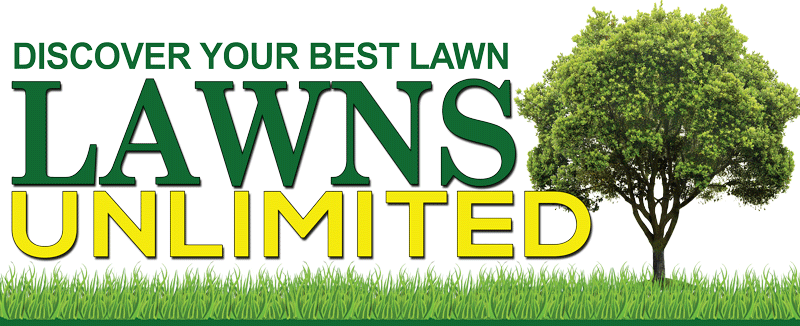
Poor soils are our most challenging problem. Many of the homes we service were built in the last 10 years and during construction many lots had sandy sub-soil (either trucked-in fill or from foundation excavation) used to level grades. Sub-soils lack organic matter and usually have very high acidity levels (i.e., very low pH). Even most of our better top soils are acidic and low in organic matter, but topsoil is superior to sub-soil for growing plants. Sandy soils that are very low in organic matter do not hold water or nutrients for long and the greater the soil acidity the more difficult it becomes for plant roots to extract nutrients. Nutrients should be kept in balance to ensure growth and vigor and to determine this we collect soil samples annually and have them analyzed for the major nutrients including nitrogen (N), phosphorus (P), potassium (K), calcium (Ca) , magnesium (Mg) and others; soil pH (i.e., acidity); and organic matter content. Every test is interpreted by one of our agronomists and the data inform of us of acidity and organic matter levels as well as nutrient deficiencies or excesses. This information allows us to identify potential problems that can be addressed and is critical to our ability in delivering a quality lawn. Please appreciate, that in many cases it is not possible to correct acidity problems, extremely low soil organic matter levels, and severe deficiencies of some nutrient in a single treatment to established lawns.
As noted above, our Delmarva soils are sandy and usually very low in organic matter. It is not possible to boost the organic matter level in soil substantially once the lawn is in place. Improving organic matter levels quickly can only be accomplished by tilling-in large amounts of organic matter prior to establishment. Coring and working organic matter into open holes helps, but it requires numerous treatments overtime to significantly build-up organic matter levels in the root-zone. However, growing a healthy root system will slowly increase organic matter as old roots are replaced by new roots. In the meantime, we endeavor to provide our customers with the nutrients their lawn needs most and to apply adequate amounts of limestone (sometimes annually where soils are very acid) to correct soil acidity.
We visit numerous lawns each year to address customer concerns and sometimes we perform a soil test to assist us in diagnosing problems. Once we rule out diseases and insects or issues related shade, tree root competition, poor drainage and soil compaction, we gather soil samples to shed light on potential nutrient, organic matter and soil acidity issues. A common scenario deals with isolated pockets of yellow or otherwise weak and/or unthrifty turf. We sample from healthy and weak areas separately, analyze the soil and compare results. We often find in weak areas very low soil pH’s and sometimes calcium and/or magnesium deficiency’s. These pockets of poor turf often are the result of sub-soil fill materials having been used after construction to level the grade.
Another problem with some lawns is that the grass species or variety (i.e., cultivar) grown is not adapted to our sandy soil, Delmarva climate or perhaps shady areas. In this case, we will offer to introduce a grass that is better adapted to perform well in our unique growing environment.
One thing you can do to help your lawn nutrient-wise is to return rather than bag clippings. Clippings contain many nutrients (i.e., nitrogen, phosphorous, and potassium) and they provide some organic matter. While clippings are mostly water, research has shown that their return to lawns can provide up to 1.0 pound of nitrogen per 1000ft2 annually. Unfortunately, heavy clipping deposits need to be removed since they can smother grass and make subsequent mowings even messier with heavier deposits of plant debris.
